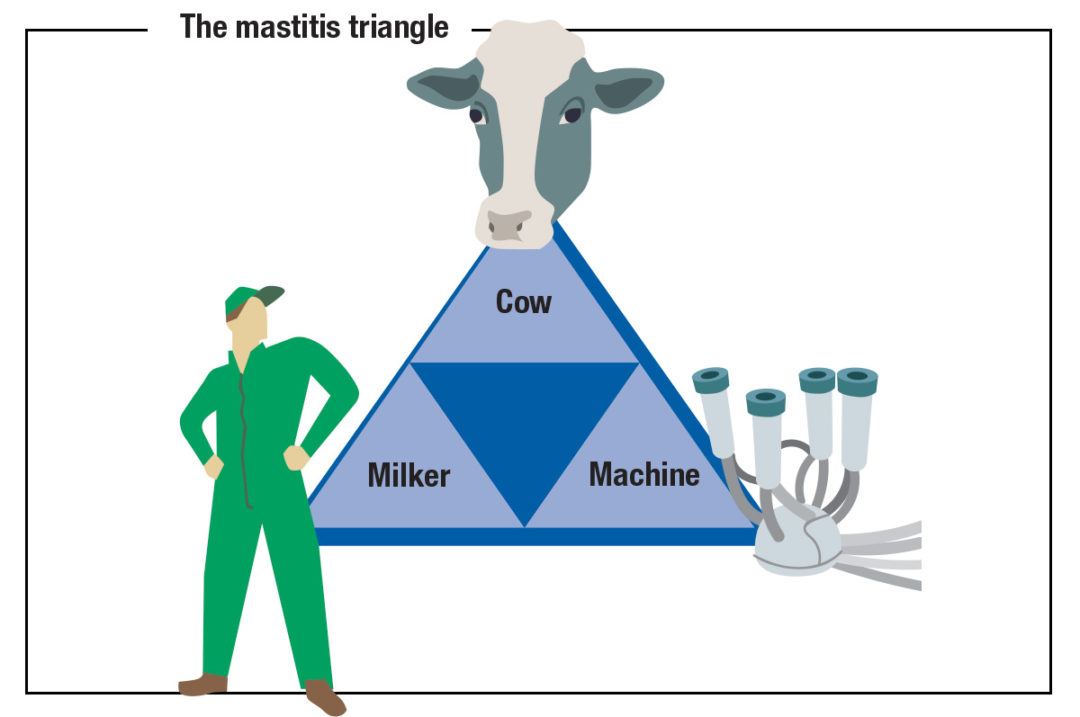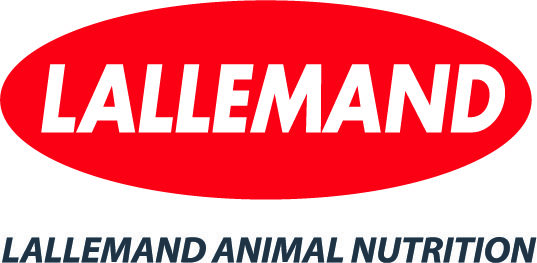All dairies constantly battle milk quality issues. Dairies need several strategies to keep the somatic cell count (SCC) of their milk under 150,000.
Producing excellent milk quality occurs when dairies genuinely understand the importance of a phrase I coined over 30 years ago, known as the “mastitis triangle.” It has three parts: the cow and her environment, the milking routine and the milking equipment. Success is easier to achieve when a dairy addresses all three parts of the mastitis triangle simultaneously. If the focus is only on one part of the triangle, the odds of success are significantly limited. Many dairies look for an easy "silver bullet" solution to fix their long-term milk quality issues, but none exist. Looking at the whole picture and considering all parts of the triangle is the only way to ensure success.
The cow and her environment
The most important part of this triangle is the cow and her environment, for both milk quality and milk production. A clean, dry and comfortable cow is the most profitable cow. While no dairy likes to hear their cows are dirty, this is still the most common cause of mastitis problems. Dirty feet and legs can become a direct source of teat contamination. Strep species is a common cause of clinical mastitis and, as I always say, “Strep species equals feces.” The best place to evaluate cows for cleanliness is where cows are being milked. Make it a priority to walk the barns and look for manure in the back of the stalls. If more than 5% of the stalls need manure or urine removed from the back, the odds of a higher SCC increase.
Dairies with the best milk quality have employees remove manure and urine contamination every milking, and, even more importantly, these dairies mechanically groom or level the stalls at least once a day. This procedure helps dry out the bedding, and the level stalls provide higher cow comfort and encourage cows to lie down.
The milking routine
Many dairies have overall good milking routines but lack consistency. Getting all employees to understand the importance of a consistent routine is difficult, especially when many dairies constantly change milking technicians with each shift. The faster cows are milked, the more money is made. Skipping important steps and trying to milk too quickly can result in problems. A real, positive response happens with a slower and more consistent milking routine. Many studies completed within the last five years clearly show timing is critical to faster milking. A proper lag time is defined as the time from stripping to unit attachment. That number needs to be a minimum of 90 seconds and can go up to 150 seconds with no negative impact. Putting machines on too fast can cause overmilking at the beginning of milking, rather than at the end, and can result in teat-end issues.
Quick tips:
- Cover 80% of the teat with pre-dip, and let sit for 15-30 seconds – depending on the germicide used.
- Use a soft cloth towel to firmly twist on each teat. Flip the towel and repeat.
- Rub across the teat end.
- Attach the unit. Ensure there is no upward milk flow, and that the machine is square with the teat cups positioned properly.
- Cover 80% of the teat with post-dip.
Taking a few seconds to check the position of the machine helps minimize liner slips and get more complete milk-outs. Select the right pre- and post-dips for your dairy based on what bacterial population is causing milk quality issues.
Milking equipment
Milking equipment is often blamed for milk quality issues. However, in my experience and research, it rarely is the root cause. Milking equipment that is properly maintained and regularly evaluated rarely causes mastitis. I place more emphasis on how the equipment performs in relation to milking speed – ensuring the cow is completely milked-out. Pay close attention to claw vacuums during peak milk flow – they should be 11.75-12.5 inches, depending on the inflation used. This number can only be collected if someone is at the dairy to evaluate the high-flow-rate cows while they are actively milking.
Select a liner that milks fast, gently, completely and with minimal liner slips. Evaluate the pulsation curve to make sure you have the correct B phase and D phase, which assures fast milking and healthy teat ends. You want the B phase to be between 480 to 550 milliseconds and the D phase to be 240 milliseconds or higher, but no less than 220 milliseconds under a full load. You may need to adjust both the pulsation ratios and their rates to achieve these B and D phases.
The last area to focus on is the automatic take-off (ATO) settings to minimize milking duration and overmilking. Most dairies – even with high production levels of over 90 pounds – typically average total durations of 3.8 to 4.2 minutes. Most dairies operate with end-of-milking flow rates of 2 pounds or higher and delay times of less than five seconds. The key is not to change ATO settings too fast and to instead make small changes and carefully monitor the results.
High-quality milk is more important than ever
Since I began working on milk quality over 45 years ago, industry changes have been amazing. The key to moving forward with industry changes is to develop plans to ensure lower SCC, fewer clinical cases and milk as many cows per hour as possible. There is a huge economic advantage to a dairy turning their parlor 3.5 times an hour compared to the same size parlor turning five times an hour. I now have high-producing dairies doing a full milking routine, with properly set milking equipment, getting over six turns per hour. Milk quality will always be a key part of having a market to ship your milk to. Many processors are still paying a dividend for high-quality milk, while others are penalized for poor-quality milk. The dairy industry is not taking milk as easily as it has in the past, and using the mastitis triangle to ensure excellent milk quality is one thing that can help you keep your market or gain access to new ones.





